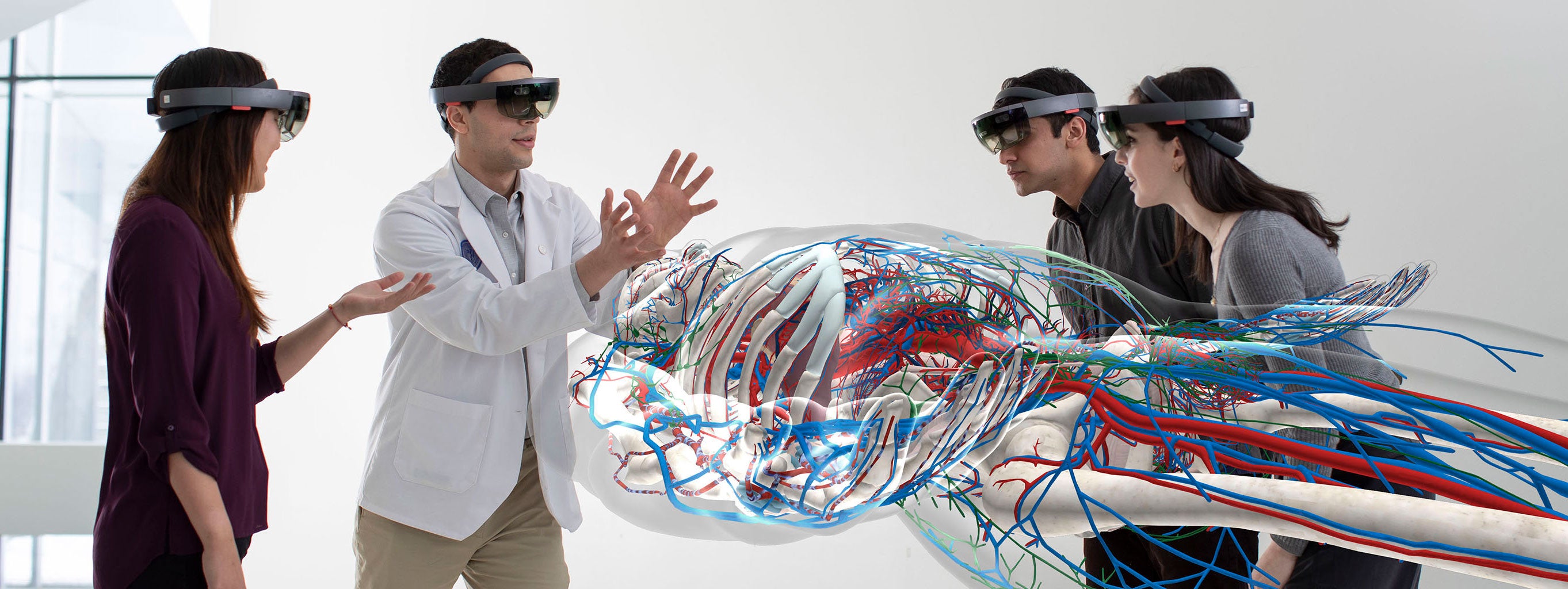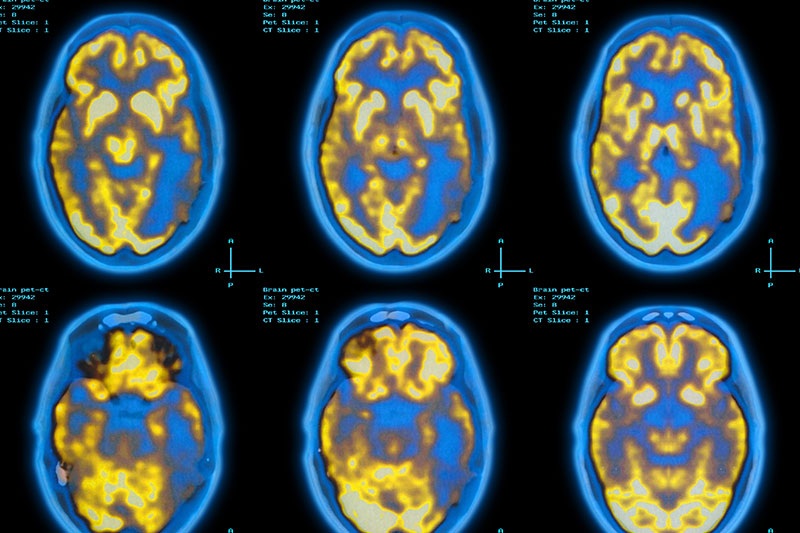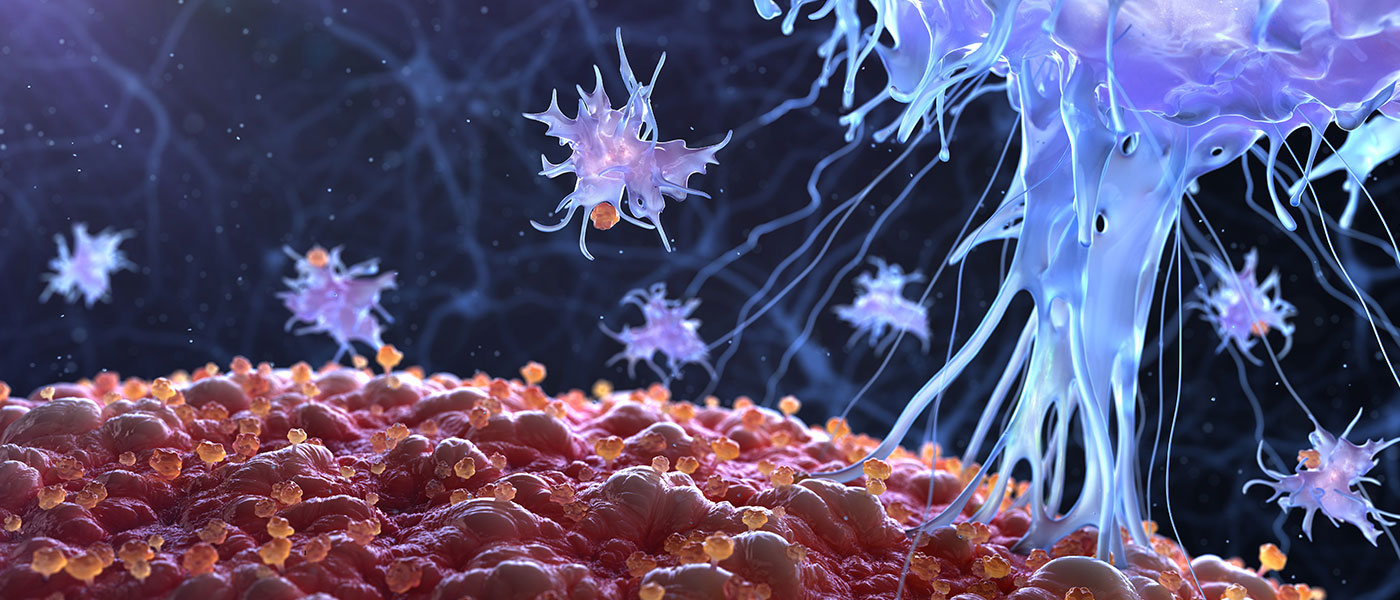
Make It Happen
We partner with one of the world’s best hospital systems for health education. We apply technology in unprecedented ways. And we deliver life-changing solutions for those in need.

All Together Now
This spring, students from Case Western Reserve’s dental, nursing and medical schools (including its Cleveland Clinic Lerner College of Medicine program) are moving into their first common home: a 477,000-square-foot space expressly designed to encourage interaction throughout all four of its floors.
Above is the epitome of the design approach for the Health Education Campus, a 21,000-square-foot atrium that includes space for dining, studying or simply chatting with a classmate under a tree. Along with this atrium and smaller informal gathering spaces, the building includes state-of-the-art classrooms and simulation areas—as well as space for mixed-reality anatomy coursework. Across the street is the second building of the campus, a 134,000-square-foot dental clinic that will allow students to provide far more community care.
Learn About Our New Campus2,200
medical, nursing and dental students learning together
600,000
square feet across 2 buildings
19,000
patients treated annually at the dental clinic

We Bring Anatomy to Life
Textbooks and cadavers are two of the greatest challenges for medical students learning anatomy.
The printed page can offer incredibly detailed illustrations of organs, systems, and more—but only in two dimensions. Bodies address that shortcoming, but include another: Students must change the appearance of the systems they are studying to learn their details, whether by moving one organ out of its place to view another, or cutting one open to view its interior.
Enter HoloAnatomy, a digital curriculum that allows users to view 3D holograms of the body from every possible perspective—including within it. Students no longer are limited to intensive examination of one cadaver, but instead can see holograms of all ages, with any kind of injury or disease, and so forth.
Plus, thanks to the mixed-reality format of Microsoft HoloLens, students and faculty can see one another while they explore holographic images.
Preliminary studies with Case Western Reserve medical students found that they not only learned more quickly, but also retained more of what they learned.
As the project’s faculty leader and professor of radiology Mark Griswold puts it: “Any time that you change the way that you see things, it changes the way that you understand them.”
Watch What We've Created1st
third-party app in the Microsoft HoloLens store
3
HoloLens apps created by Case Western Reserve
#1
augmented reality experience, topping Google and Sir David Attenborough

Our Robots Help Humans Work Smarter
Depictions of robots in the workplace long have shown futuristic machines churning out basic widgets or, in some cases, replacing humans completely.
But what if the two worked together in a way that increases both efficiency and safety?
Our researchers are part of a multi-institution international project to study, predict and optimize this robot-human interaction in manufacturing—especially teaching robots to recognize random human motions in a variety of different scenarios.
The new National Science Foundation-funded initiative could free up humans for the more-nimble decision-making, while robots lift heavy tools or put the right tool at the human partner’s side at the precise moment it’s needed.
With this project, we’re making factories of the future safer and smarter.
Find Out About Our Robots$1.5M
National Robotics Initiative grant
3
academic institutions
2
Italy-based partners

We Help Address Alzheimer’s—Block by Block
Diagnosing Alzheimer’s disease can be difficult, costly and sometimes subjective. But a few illuminated cubes could offer a better, cheaper approach.
Case School of Engineering Assistant Professor Kiju Lee’s colorful cubes are automated, interactive block games that can be used as part of routine assessments of older adults to help make a preliminary evaluation of Alzheimer’s disease or mild cognitive impairment.
Lee’s games and other Case Western Reserve inventions are being used in a “living lab” that opened last fall in a senior living community outside Cleveland, where the adults work with the devices before the technology advances to the marketplace—and where university faculty and students can immediately connect with the residents to address their daily challenges.
It’s just one way we’re working to create better outcomes for our community—and beyond.
Learn About the Blocks3
types of games created
2,400
square-foot Smart Living Lab to work with seniors
4
schools at CWRU involved in block research

We Help Humanities Unite a City
The humanities are an ideal connector—bringing people together through a wide variety of cultural components, from history to literature to the arts.
That’s why, in 2016, Case Western Reserve University created the Cleveland Humanities Festival, an annual two-month-long event exploring society and the world.
Each spring, we select speakers, readings, films and discussion topics that center on a theme: This year, it’s nature; in 2018, we explored health. The festival engages both the campus and the Greater Cleveland communities to address some of society’s most challenging issues and pressing concerns.
By partnering with our region’s major museums, educational institutions and arts organizations, we’re sparking debate, encouraging problem-solving—and bridging our university with the city we call home.
Learn about the festival8
weeks of events
4th
annual celebration
39
community partners

We Teach Computers to Save Lives
Anant Madabhushi wants to spare patients from invasive procedures. And unnecessary chemotherapy. And needless worry.
Most of all, though, he wants to help save their lives.
His weapon in this battle against disease? The algorithm.
The Case Western Reserve professor leads a team using technology to “see” medical images in entirely new ways. By feeding computers hundreds of digital scans, Madabhushi and his team teach the machines to find specific signs and patterns.
In some cases, they signal disease. In others, something benign. And, just as important, those instances where the most aggressive approach isn’t advisable.
His deep learning system correctly spotted signs of pending heart failure nearly every time, while pathologists were right in only about three-quarters of cases.
It also discovered that the arrangement of lung cancer cells indicated whether aggressive chemotherapy was required—a breakthrough Prevention named one of its top 10 medical breakthroughs of 2018.
And, in another case, was able to spot invasive breast cancer with 100 percent accuracy. The approach offers promise in identifying Alzheimer’s disease, kidney disease, diabetes and more. As Madahushi says, “we’re just scratching the surface here.”
See His Recent Research#1
most popular undergraduate major: biomedical engineering
1968
biomedical engineering department founded—among first in the world
#10
"most incredible medical breakthrough of 2018" for Madabhushi's work
We Make Safer Drinking Water a Worldwide Reality
More than 2 billion people worldwide lack access to clean drinking water—putting them at risk for diseases such as cholera, dysentery and hepatitis A.
But a group of Case Western Reserve University medical students aims to change that. Known as the Billion Bottle Project, the team wants to make sure people around the world can quickly, accurately and inexpensively assess if and when their water is safe to drink.
They’ve created a low-cost, reusable device that can be placed directly into a water bottle that is undergoing the natural “solar disinfection” process; when the water is safe to drink, the device turns from blue to white to alert individuals it’s OK to take a sip.
Among its most recent honors, the Billion Bottle Project won $15,000 from the U.S. Environmental Protection Agency and is a finalist in the 2018 Collegiate Inventors Competition by the National Inventors Hall of Fame.
“What drives us,” said medical student Sanjit Datta, executive director of the group, “is the potential to impact the health of so many people with a device that is so simple and affordable.”
Find Out About the Project$70,000
in grants and awards
3rd
place in the national Collegiate Inventors Competition
17
CWRU medical students on staff
We Make Cancer Easier to Spot
What if doctors could tell a cancer patient immediately if a mass was cancer—or not? What if a surgeon could tell a patient they know for certain they removed all of the cancer?
Right now, these tasks can be intrusive, invasive and sometimes impossible. But Susann Brady-Kalnay, a professor of molecular biology and microbiology, has created a method that could change that.
She invented an imaging solution to detect cancerous tumors, SBK2. When injected before a scan, the dye could, Brady-Kalnay hopes, find tumors and detect if they are malignant—reducing or eliminating the need for biopsy. The solution also could, for example, light up tumors in the operating room or determine whether cancer treatments are working or not.
Now in the business discovery phase, Brady-Kalnay works with the state-funded I-Corps@Ohio program to identify possible markets. In addition to university support for her work, the National Institutes of Health awarded her $3.4 million to conduct studies needed for Food and Drug Administration approval so she can bring the solution to the real world.
“Think how much better it would be for the patient,” Brady-Kalnay said. “That's why I'm pursuing this so rigorously.”
See Her Work277
new inventions
62
new intellectual property deals with industry
$3.6M
licensing revenues
Based on FY 2017-2018
We Make Far-Away Fashion Close to Home
Watching her mother struggle to get clothing from her home country of Nigeria inspired Chioma Onukwuire to launch Chimu, a platform for African artisans to sell their goods in the U.S.
Onukwuire, a recent graduate of Case Western Reserve University’s Master of Engineering and Management program, works with seamstresses from different countries in Africa on the designs, then buys their work in bulk and sells and ships it in the United States—creating a business model that offers lower prices, online purchasing and easier returns, similar to a more “typical” domestic retail business.
“They do amazing work, but they just need people to see it,” Onukwuire said.
As her business blossomed, she won $500 in an alumni-sponsored pitch competition, $2,500 from a startup fund managed by Sears think[box] and a local contest to spur business among local entrepreneurs.
Read More About Onukwuire100+
student startups created with CWRU support
$12M
in funding for student entrepreneurers
7
stories and 50,000 square feet dedicated to innovation


